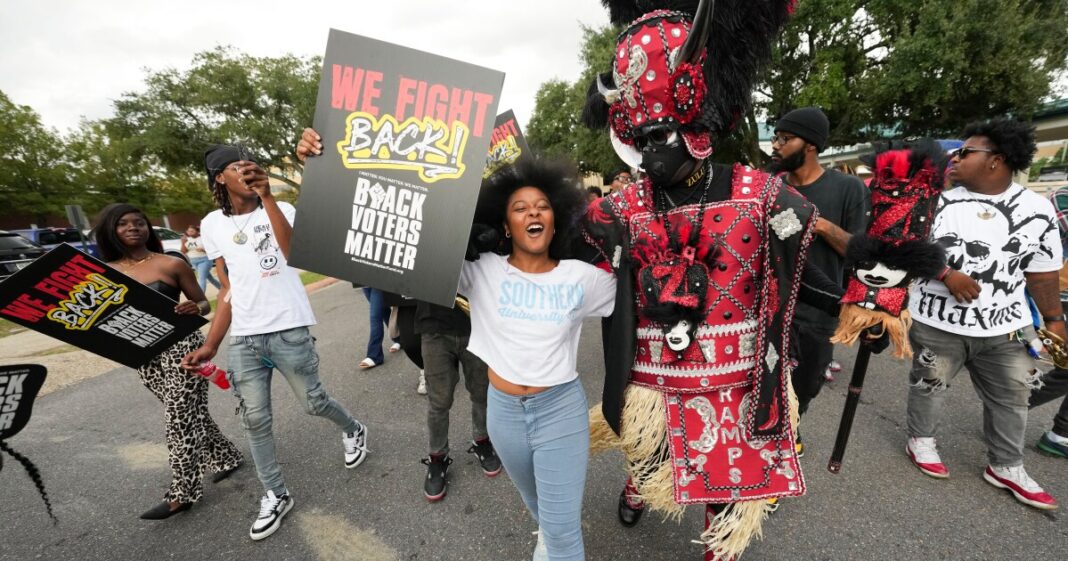Supreme Court Case: Potential Changes to the Voting Rights Act and Congressional Districting
On Wednesday, the Supreme Court of the United States will hear a pivotal case that could dramatically reshape the landscape of voting rights in the nation. Legal experts are raising alarms about the implications of Louisiana v. Callais, a case that centers on how race is considered in drawing congressional maps. The ramifications of the court’s decision could reverberate throughout the country, affecting electoral processes and representation in various states.
The Central Question: Race in Redistricting
At the heart of the case lies a fundamental question: Should race play a role in determining the boundaries of congressional districts? For decades, Section 2 of the Voting Rights Act has been interpreted to mean that states with significant minority populations must create districts that ensure these communities have the ability to elect representatives of their choosing. However, this interpretation is now being challenged, leading to potential changes that could affect millions of voters.
Background of the Case: Louisiana’s Redistricting Controversy
The controversy began during Louisiana’s recent redistricting process. In 2022, state lawmakers crafted a congressional map that featured only one Black-majority district. Given that Black voters comprise about one-third of Louisiana’s population and the state holds six congressional seats, many argued that this map violated the Voting Rights Act. As a result, the courts mandated Louisiana to redraw the map, resulting in a second Black-majority district.
However, this adjustment led to a further lawsuit from voters who identify as “non-African American.” They argue that the inclusion of race in the redistricting process is inappropriate and that all voters should be treated equally, without race being a determining factor in district creation.
The Legal Framework: Section 2 of the Voting Rights Act
The legal foundation of this case hinges on Section 2 of the Voting Rights Act, which has been a critical tool for protecting the voting rights of minorities since the law’s signing in the 1960s. Historically, the section has been viewed as a way to ensure that minority voting power is accurately reflected in congressional representation. Yet the current Supreme Court’s stance on this interpretation remains uncertain as they ponder whether this framework is constitutional.
Louisiana’s Attorney General, Liz Murrill, has voiced a perspective aligned with a color-blind approach to voting rights, stating, “Our Constitution sees neither black voters nor white voters; it sees only American voters.” This philosophy champions the idea of equality under the law, but critics argue that ignoring race overlooks the ongoing realities of racial discrimination and its impact on voting patterns.
Historical Context: Significance of the Voting Rights Act
To fully appreciate the stakes involved in this case, it’s essential to consider the historical backdrop. The Voting Rights Act was enacted during a tumultuous time in American history, largely inspired by the civil rights movement led by figures such as Martin Luther King Jr. The act aimed to combat systemic disenfranchisement that Black voters faced and has been a cornerstone of American democracy since its inception.
If the Supreme Court were to strike down or undermine the provisions of the Voting Rights Act, the impact could be far-reaching. States, particularly in the South, could be compelled to redraw their congressional maps to comply with new legal interpretations, potentially shifting the balance of power in Congress.
Diverging Opinions on Racial Considerations in Voting
The debate over the role of race in drawing congressional lines is not just a legal one; it also raises moral and ethical considerations. Opponents of race-conscious redistricting argue that such practices entrench divisions and perpetuate identity politics. They claim that voters should be unified by shared interests rather than racial identities.
Conversely, civil rights advocates assert that racial dynamics still profoundly affect voter access and electoral outcomes. A brief filed by the ACLU and the NAACP Legal Defense Fund emphasizes that while strides have been made toward a racially equitable society, the legacy of discrimination remains a pressing concern. This perspective stresses that lawmakers must recognize the historical context of race in order to make meaningful progress in developing fair electoral systems.
Implications for Future Elections and Representation
The outcome of Louisiana v. Callais is poised to influence not just Louisiana but also other states grappling with similar questions of race and districting. Should the Supreme Court rule against race-inclusive redistricting, it could set a precedent that endangers protections granted by the Voting Rights Act. The stakes include the potential for altering congressional representation, impacting legislative agendas, and affecting the political power of minority communities.
As the court hears arguments, Americans across the nation will be watching closely, understanding that the future of voting rights and equitable representation hangs in the balance. This case underscores the ongoing struggle over the definition of fairness in American democracy, illuminating the complex intersection of race, politics, and the law.



